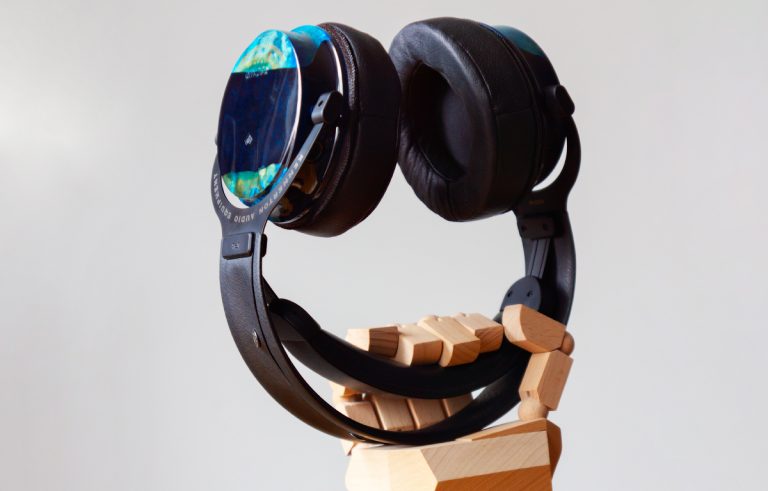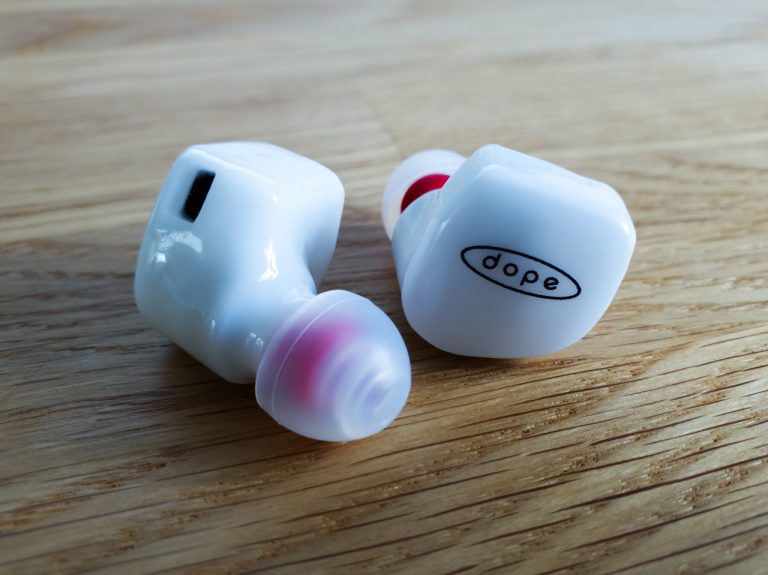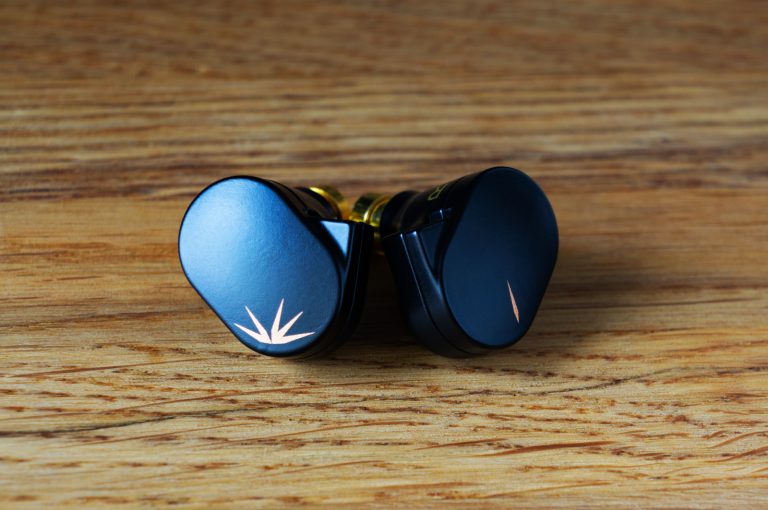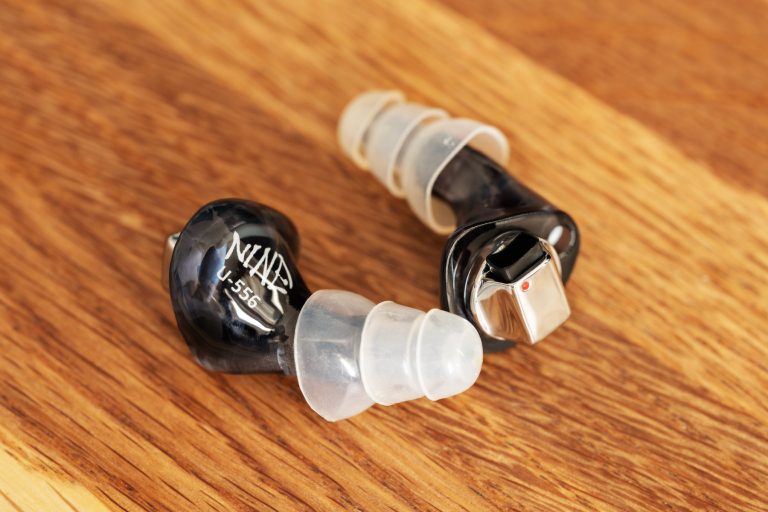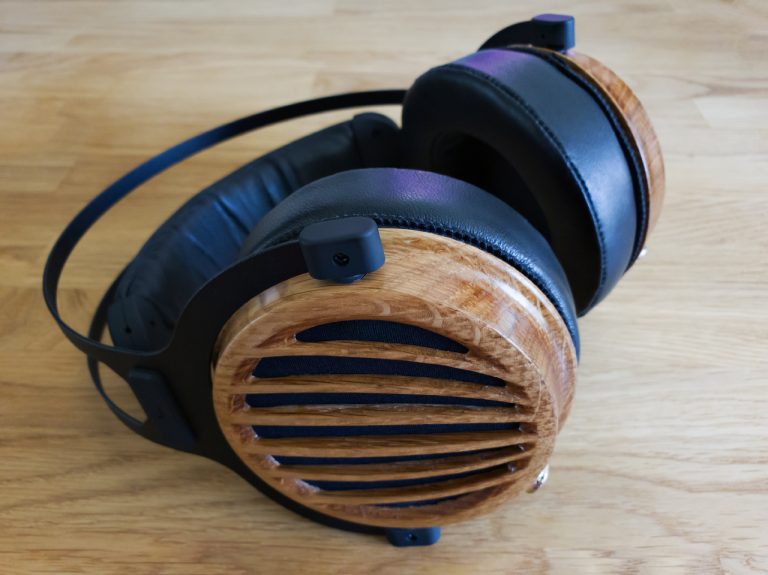Truthear HEXA Earphones Review
Even before the release of the excellent ZERO:RED, Truthear became known for two other models, NOVA and HEXA. We’ll talk about NOVA sometime later, yet about HEXA right now, since there is plenty to talk about here.
Therefore, let me introduce Truthear HEXA, wired hybrid earphones worth of $79,99.
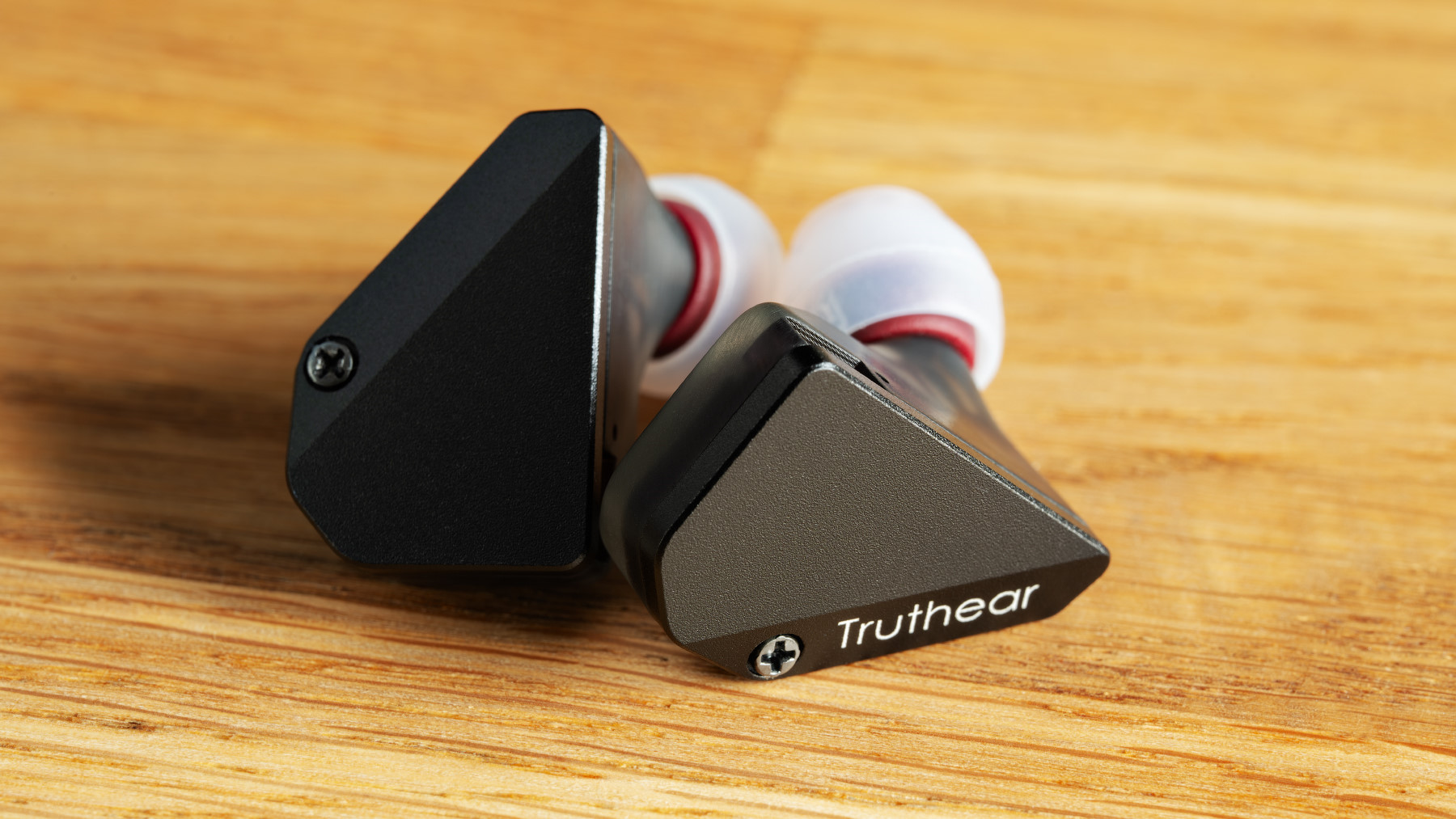
What’s included
The HEXA kit is standard for Truthear earphones.

A very well-made box includes:
- the earphones themselves;
- a cable with a 3.5 TRS L-shaped connector;
- a set of 7 pairs of eartips;
- a pouch made of faux leather;
- some papers.
We’ve already seen exactly the same cable, the same eartips, and the pouch in the Truthear x Crinacle ZERO: RED kit. Only a 10-Ohm adapter is not included in HEXA’s one.
Technological features, build quality
If you are interested in lowdown about the HEXA device, watch a wonderful video from a year ago. I have no idea how relevant the information from the video is now and whether the manufacturer uses the same components in 2024.
The earphones are constructed on the basis of one dynamic and three armature drivers. The speaker diameter is known, 10 mm, as well as the fact that the armature drivers are custom, but similar in their characteristics to the models of WBFK series by Knowles. The cases are compact, with their shape unusual, slightly angular. The outer plastic overlay and the earphone body itself, printed on an industrial 3D printer, are joined together not only with glue, but also with a screw.
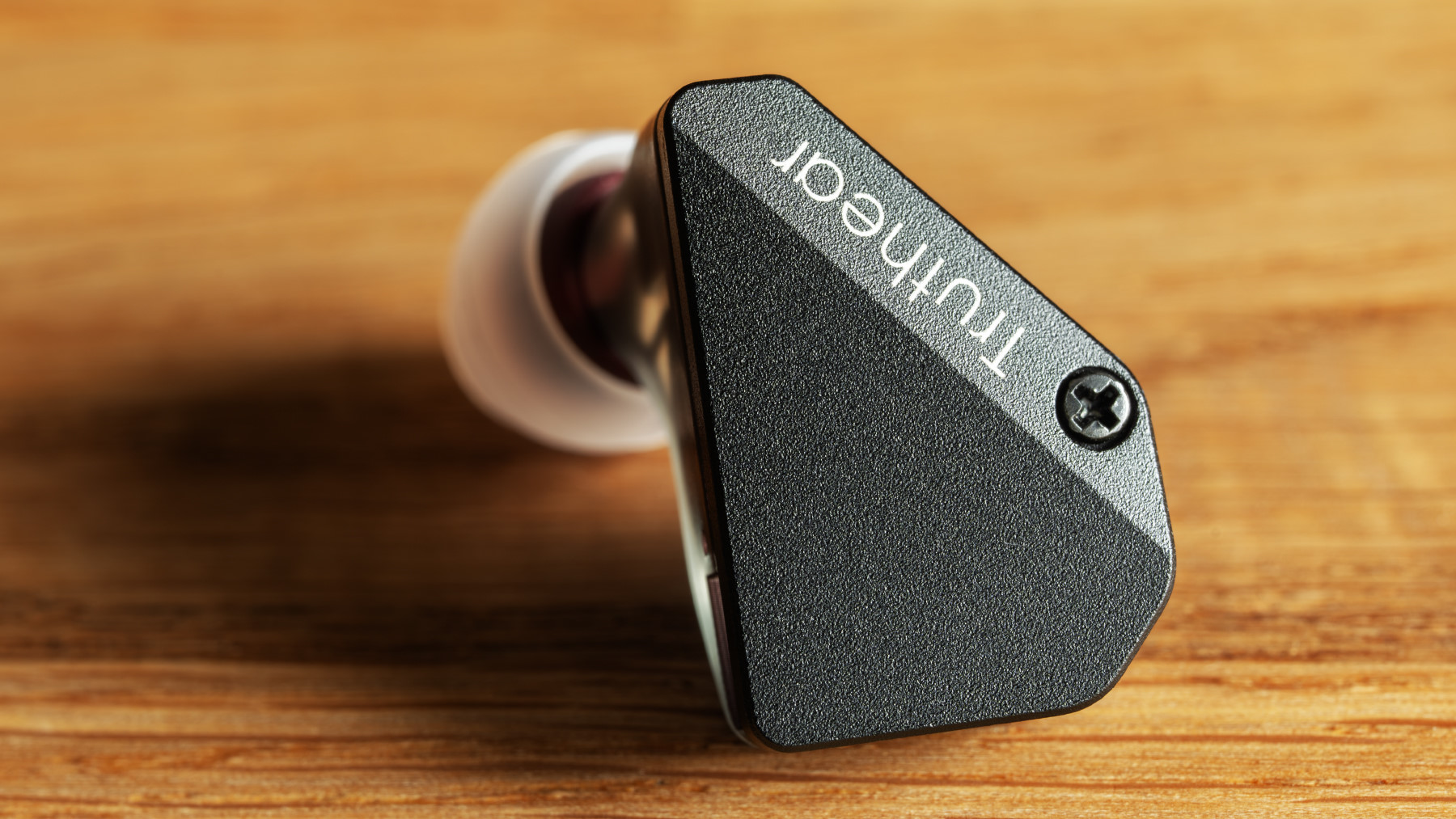
The case is translucent, but not totally transparent, with an opaque texture. If you get any good macro optics, you can see submicroscopic scratches on the surface.
There is one compensation hole located next to the cable connector.
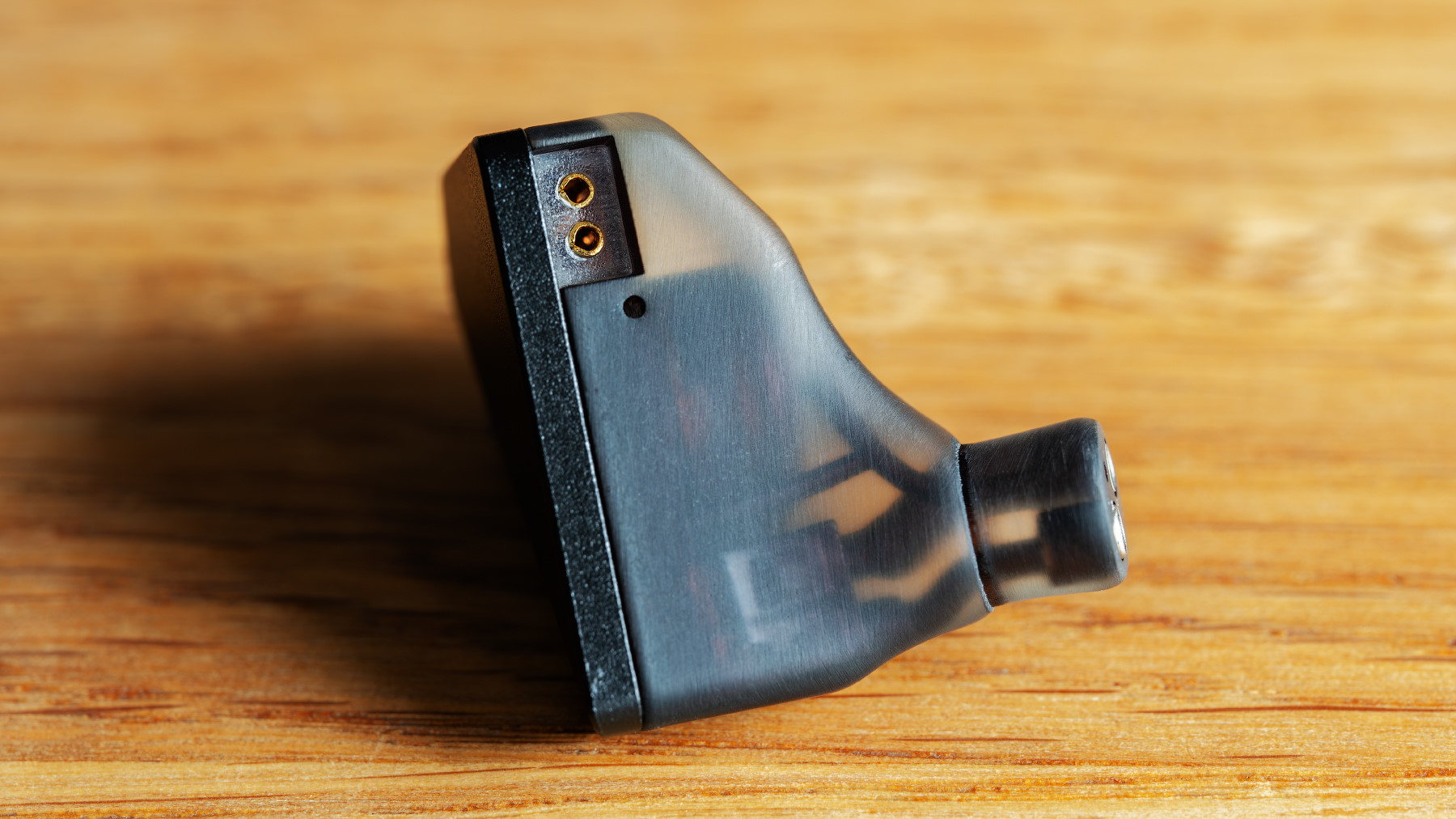
If you look at the earphone from the right angle and in the ‘right’ light, the internal structure of the sound ducts becomes visible.
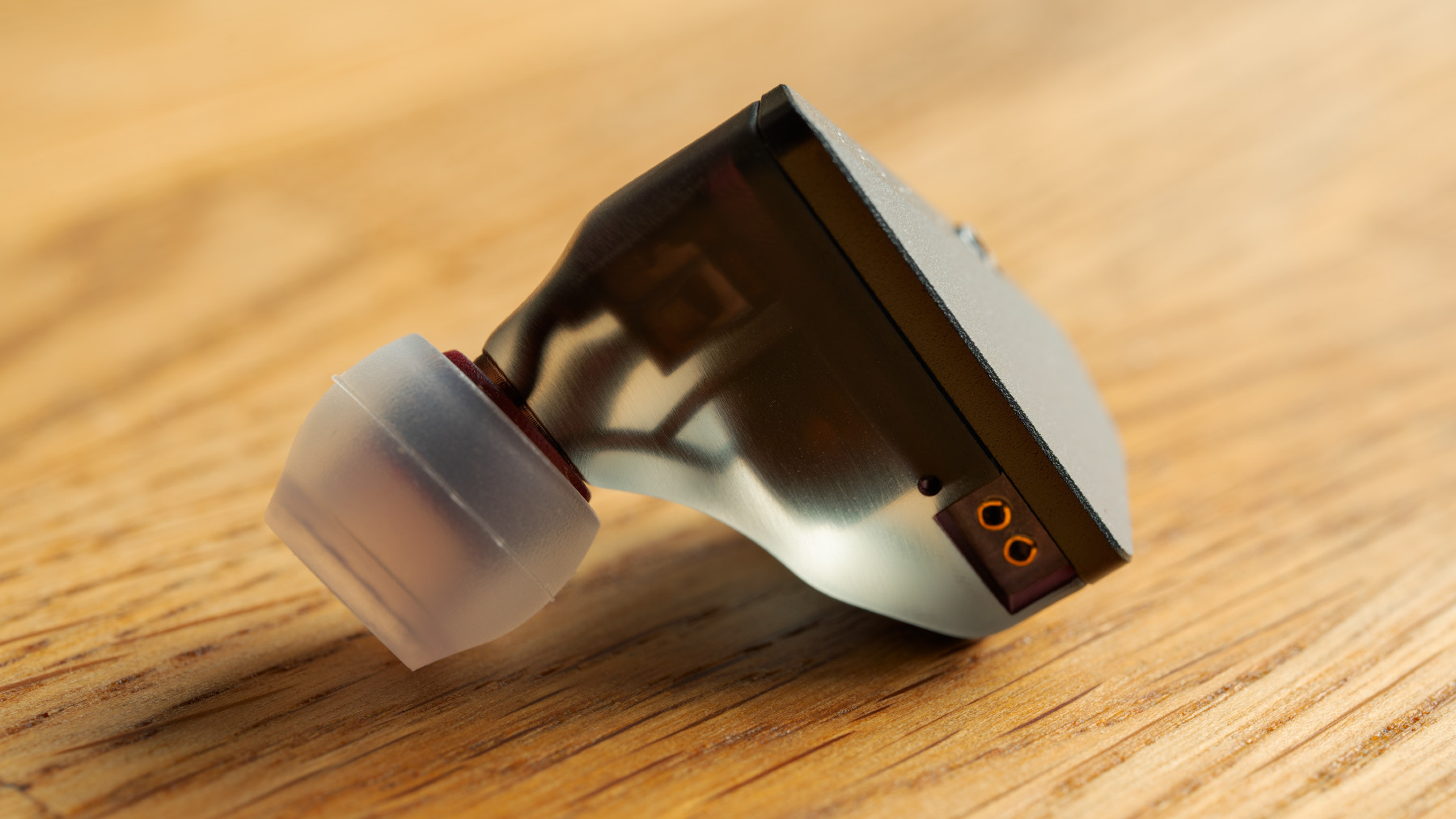
It might sound strange, but it looks somewhat… mysterious and mesmerizing. This is the association I immediately had in my head:

A channel label is extruded on each earphone. Three separate driver groups are displayed through the audio duct.
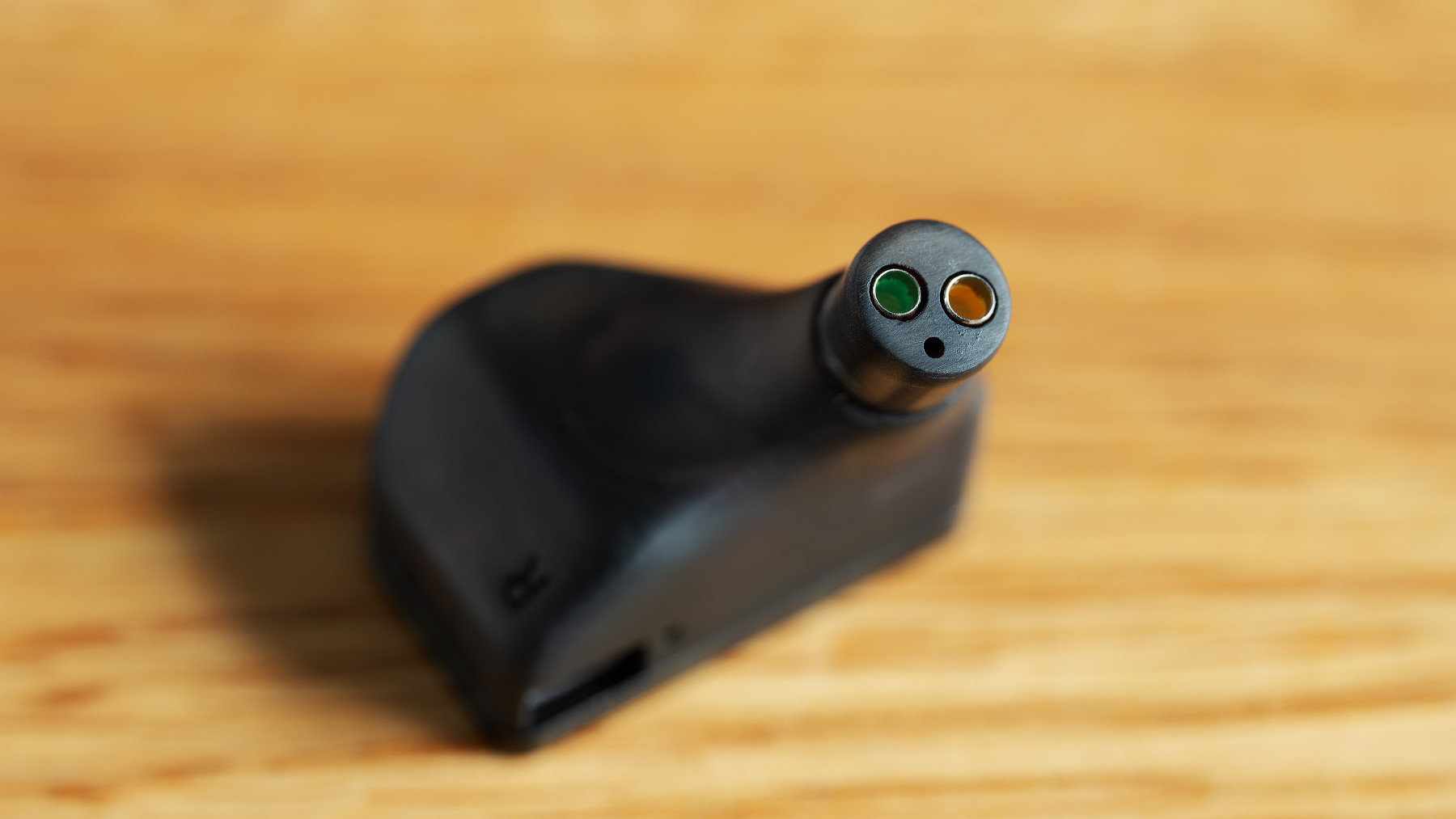
HEXA are perfectly assembled and finished, and the complete lack of gloss ensures that fingerprints, of course, will appear, but not immediately.
Ergonomics
HEXA fit in the ears nicely—not perfectly yet, like Moondrop Chu or MAY, but there are no problems with their fit. All dimensions, bevels, mutual arrangement angles, and proportions of the edges are designed in a way that the earphones ‘fit in’ as they should at once. You don’t have to get used or adapt to them.
In my opinion, the sound duct design is a significant ergonomic failure: it’s completely straight, even without a hint of chamfers for the eartips to ‘hold on’. I had to spend a plenty of time before I managed to find the eartips that would stay in soundly. Anyway, I’ll tell about the eartips below.
Quick specifications overview
- Design: in-ear closed-back.
- Drivers: 1 dynamic + 3 armature ones.
- Impedance: 20 Ohms.
- Sensitivity: 120 dB.
- Connectors: classic 2-pin, 0.78 mm.
- Weight: 6 g (each earphone).
Subjective sound impression
The HEXA sound depends a lot on masking of the earphone sound with external noise, that is, indirectly on the eartips chosen and the soundscape intensity.
The sound of HEXA ‘as is’, in conditions of external silence, is amazing. The frequencies are balanced near-perfectly. HEXA produce a really neutral sound that doesn’t lose the ability to engage in music listening.
The bass and subbass sound like absolutely linear, but, as it seems to me, the frequency response graph from 20 to about 1000 Hz is kind of tilted to the right. In other words, the subbass is above the limit, it’s raised, but with such mutual tuning of the lower and middle frequency ranges, it’s as if weighed on a precision balance in terms of quantity. I would even say, not being a basshead in the least bit, that the bass could have been richer.
The middle range is reserved in a good way, that is, it’s moved neither away from nor up to the listener. It’s just not spruced up, harmoniously lining up with the lower part of the sound range.
The upper part of the middle is devoid of sibilance or artificiality because it has a significant dip at near 5 kHz. This is an easy-to-understand, safe move in terms of tuning, which makes any sound delivery comfortable, but at the same time deprives some tracks of nuances and makes it impossible to catch ‘subtle’ sounds and harmonics. Then the volume increases up to about 7.3 kHz, but there is nothing crucial in such a feature – this is the resonance of the ear canal that depends on the fit depth of the earphones.
High frequencies after 10 kHz gradually decrease in volume up to 20 kHz. There are much fewer of them than we would be happy with; the earphones play this part of the range calmly, without rustling or ringing, but also without any feeling of airiness.
As a result, HEXA offer a universal balanced delivery, in which the volume is simply lowered in all the most ‘controversial’ parts of the sound range. The sound delivery is solid, the multi-driver does not manifest itself in any manner. In the general assessment of tuning, the opinions can be divided: some will describe the sound delivery as balanced, natural, and universal, while others may call it boring and even ‘milk-and-water’, lacking ‘technicality’. This is a matter of personal preference.
In the bustling street conditions, the HEXA sound changes. More accurately, its brain perception changes due to a large number of parasitic noises that will somehow ‘squeeze’ into your ears, no matter what eartips you choose. The subbass and the bass are heard worse, muffled by urban noise, as well as some of the midrange frequencies. Only the ‘upper middle’ and the ‘very top’ survive. It makes you want to raise the volume, but the sound starts grating on your ears. This unpleasant effect is dependent on sound insulation, but I failed to overpower it even with the best eartips I have. Especially in the subway.
The virtual sound stage is ‘drafted’ by HEXA rather narrowly; the sound source positioning is decent.
Measurements
The earphones were connected to the RME ADI-2 DAC (IEM output). A measuring rig conforms to the IEC60318-4 standard. The smoothing is indicated on the graphs. For the info about rigs, graphs and headphones measurements, refer to my article.
Frequency response of Truthear HEXA:
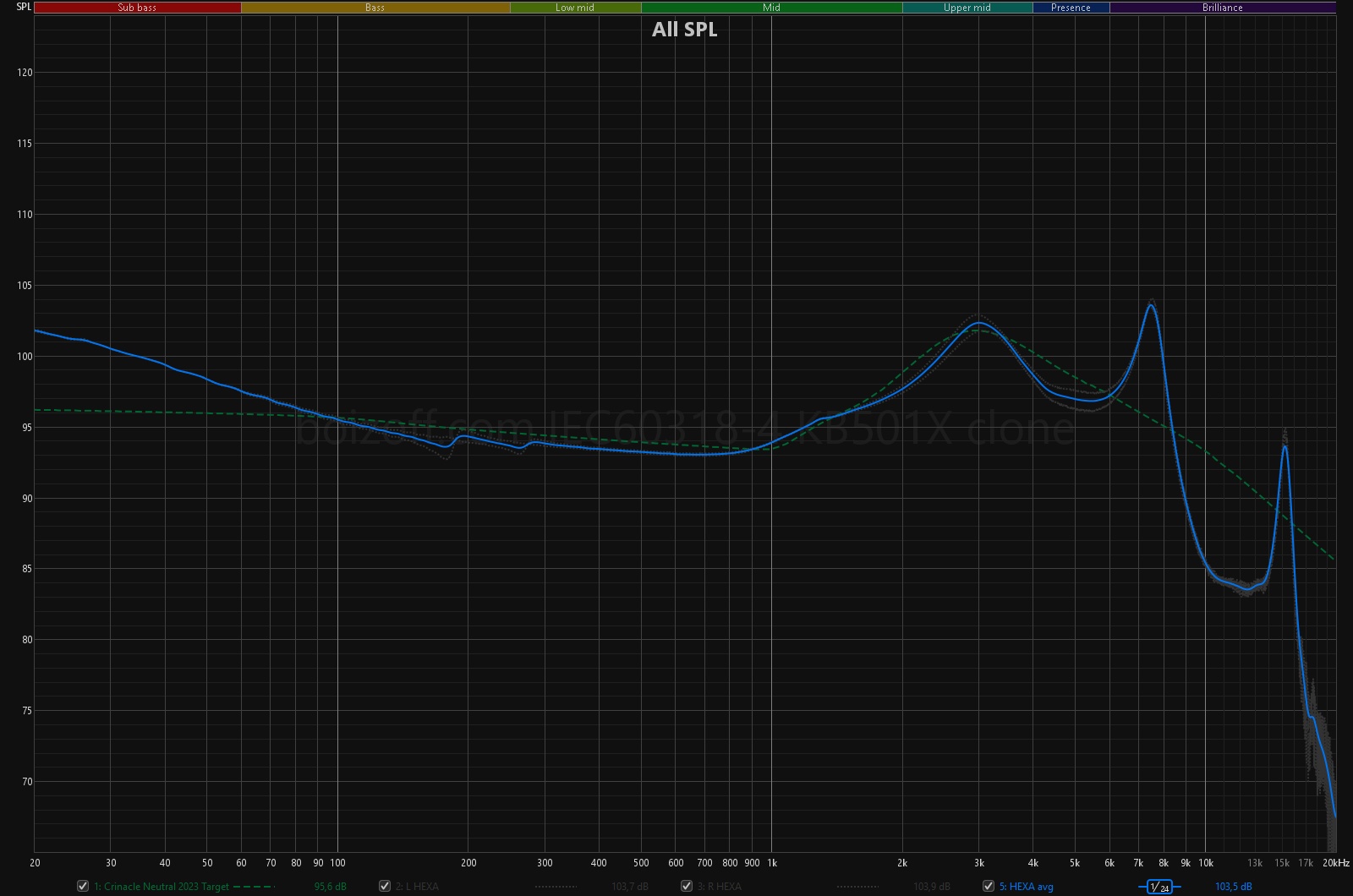
What interesting things can be seen on this graph?
- Tuning of the range from 20 Hz to 3 kHz is unique. Personally, I’ve never seen anything like this in any other headphone model;
- There’s an almost linear section from 20 to 1000 Hz, but tilted to the right and having some decline in the 200 Hz area;
- There’s a peak at 7.5 kHz, the location of which for each individual user will be determined by the fit depth. The peak is frankly too big, and some listeners may perceive the sound as too sharp;
- There’s a significant decrease after 10 kHz, which is actually perceived by brain as ‘lack of air’ or ‘narrow sound stage’.
The left/right volume balance is pretty OK:
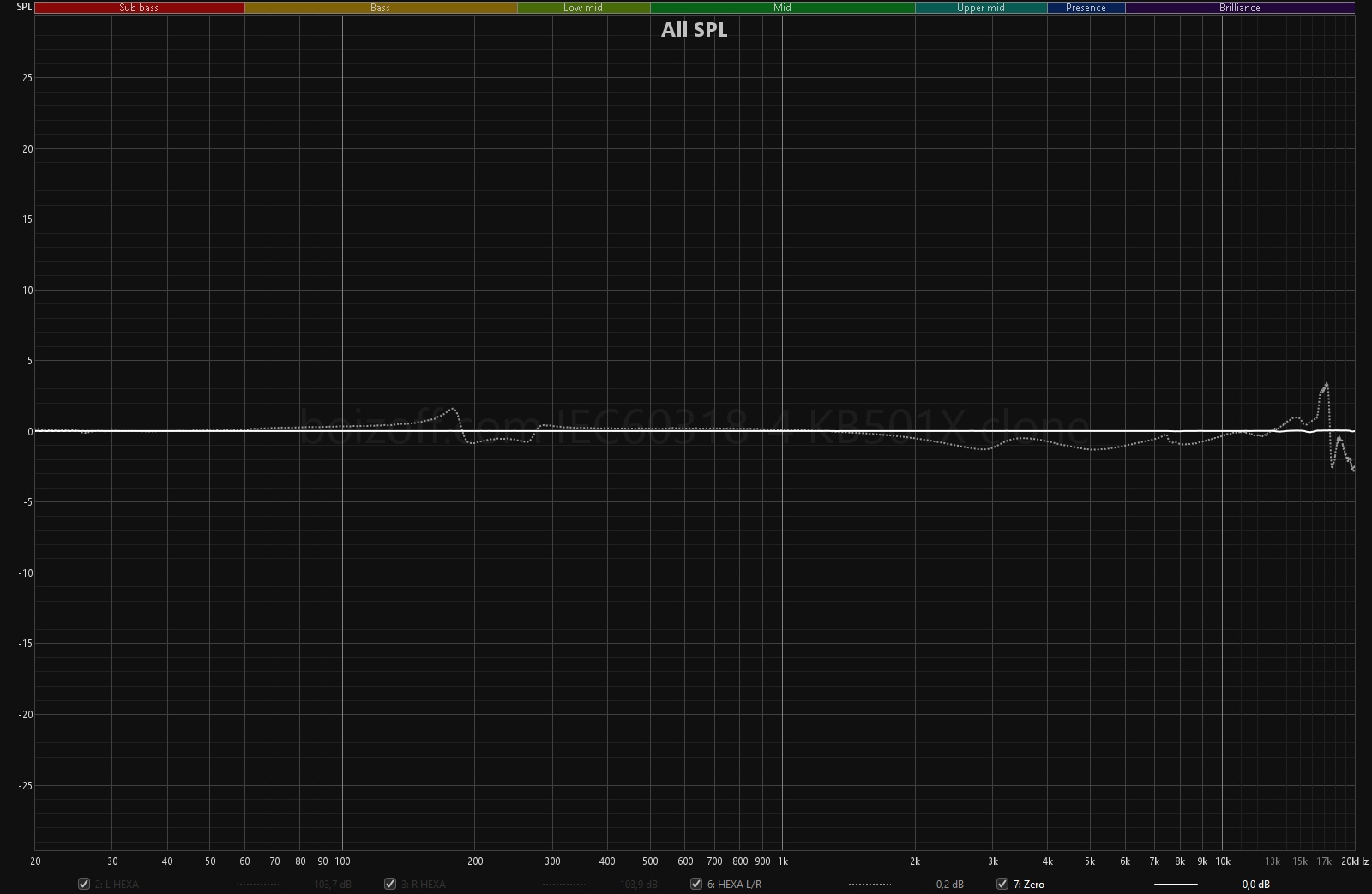
Nonlinear distortion. We’ve seen better, to put it mildly:
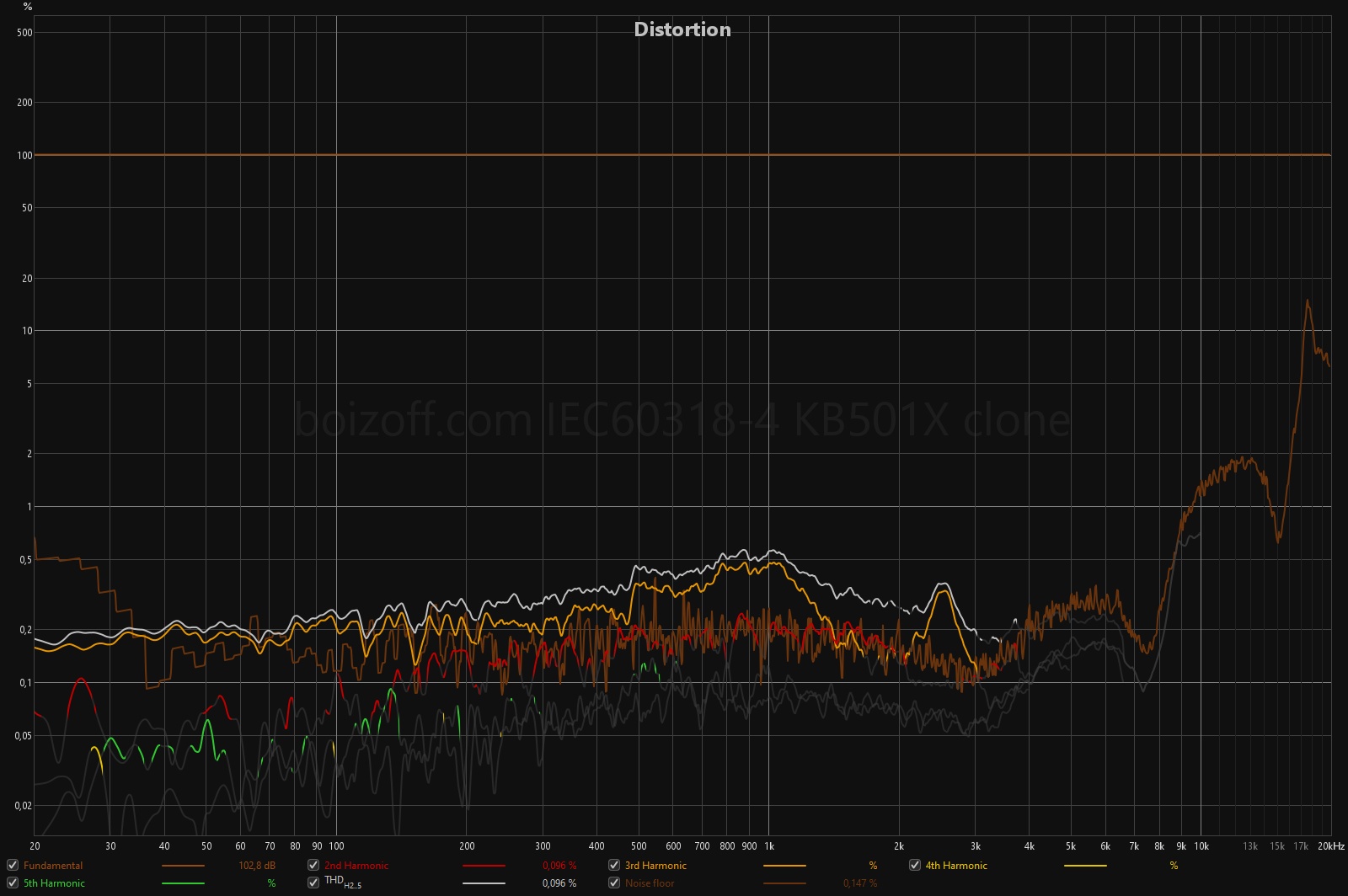
Sound source choice
For my listening tests, I’ve connected the earphones to the following devices.
- PC + RME ADI-2 DAC fs (IEM output) – unbalanced connection;
- PC + RME ADI-2 DAC fs (‘High Power’ mode) – unbalanced connection;
- Hiby R6 gen 3 (Gain – High, Amplifier Operation – Class AB/A) – balanced connection.
The sources were switched instantly by a mechanical input switch. The volumes of all sources were preliminarily aligned (by means of the measuring rig) at 94 dB, at 1 kHz. All software sound processing algorithms were disabled on the sources, and a digital ‘fast roll—off’ filter (or its equivalent) was set.

I couldn’t notice any difference in the sound of the earphones when switching the sources.
Eartip choice
HEXA are quite specific when it comes to the choice of eartips because they impose the following requirements:
- A very high degree of sound insulation. Otherwise, the listener will hear no bass.
- A very high degree of fastening security of eartips on sound ducts. Otherwise, the listener will have to pick the eartips out of their ears.
And my favorite TRI Clarion don’t fit well here – they just fall off.
Therefore, my advice will be as follows:
Foam eartips. Everything is cut and dry with them: they ensure excellent sound insulation, but (subjectively) reduced comfort of use and discomfort when frequently putting the earphone into and out of the ear.
EPZ eartips. Relatively thick, attached to the sound ducts like a vice, these eartips let you place HEXA into your ears deeply, reliably, and with very good sound insulation. Another advantage is that they don’t narrow the diameter of the sound duct and don’t overlap its edge at all.
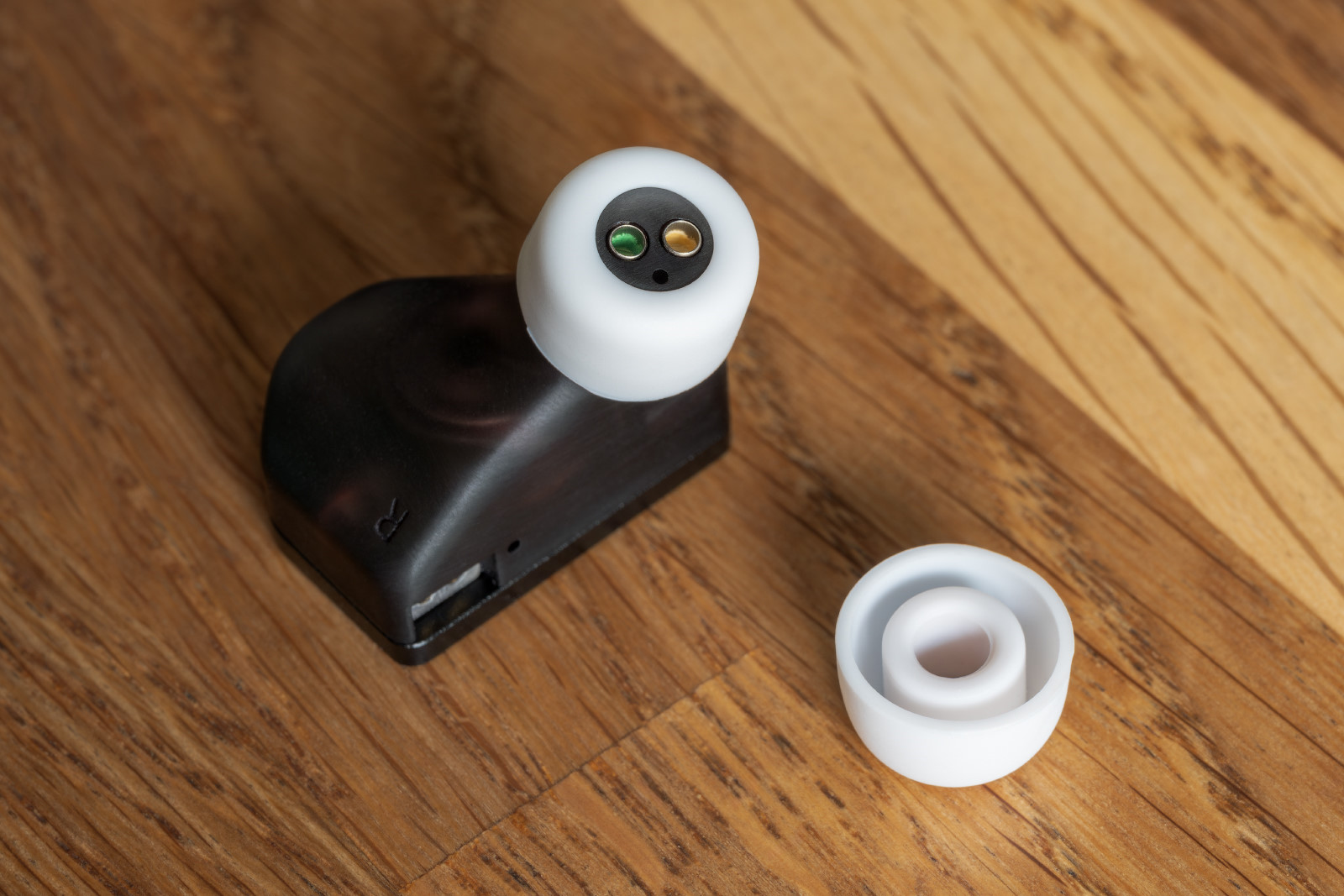
Divinus Velvet eartips. They have a super-pleasant velvety coating, but, most importantly, they are specifically narrowed at their foot, due to which they execute a pincer movement on the earphones’ sound ducts.
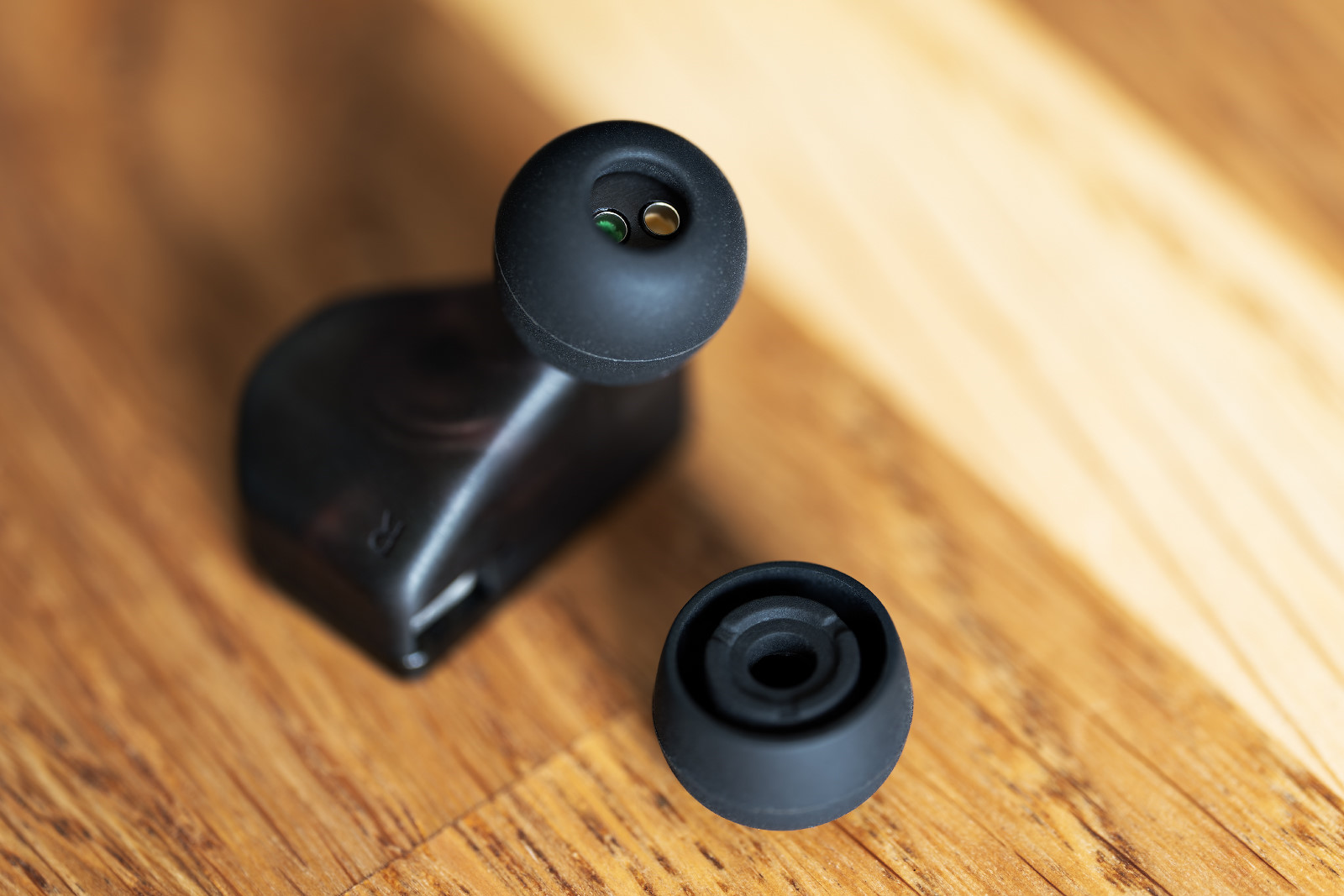
My personal choice is EPZ.
Comparisons
PLEASE NOTE: everything I say below is only applicable to the earphones from the point of view of comparison to other models, nothing more!
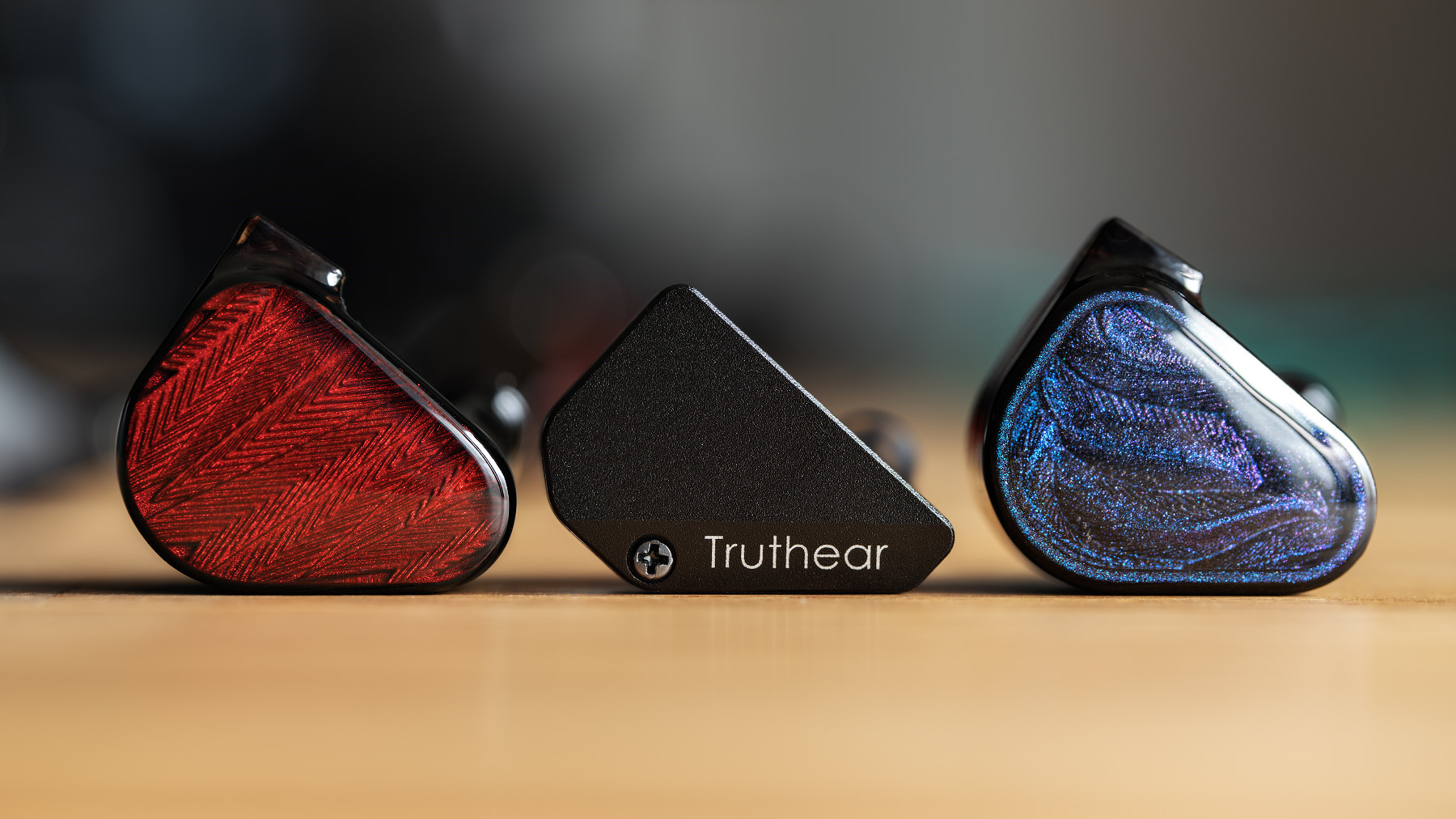
Truthear HEXA vs. Truthear x Crinacle ZERO: RED
The Truthear HEXA and Truthear x Crinacle ZERO: RED frequency response graphs compared:
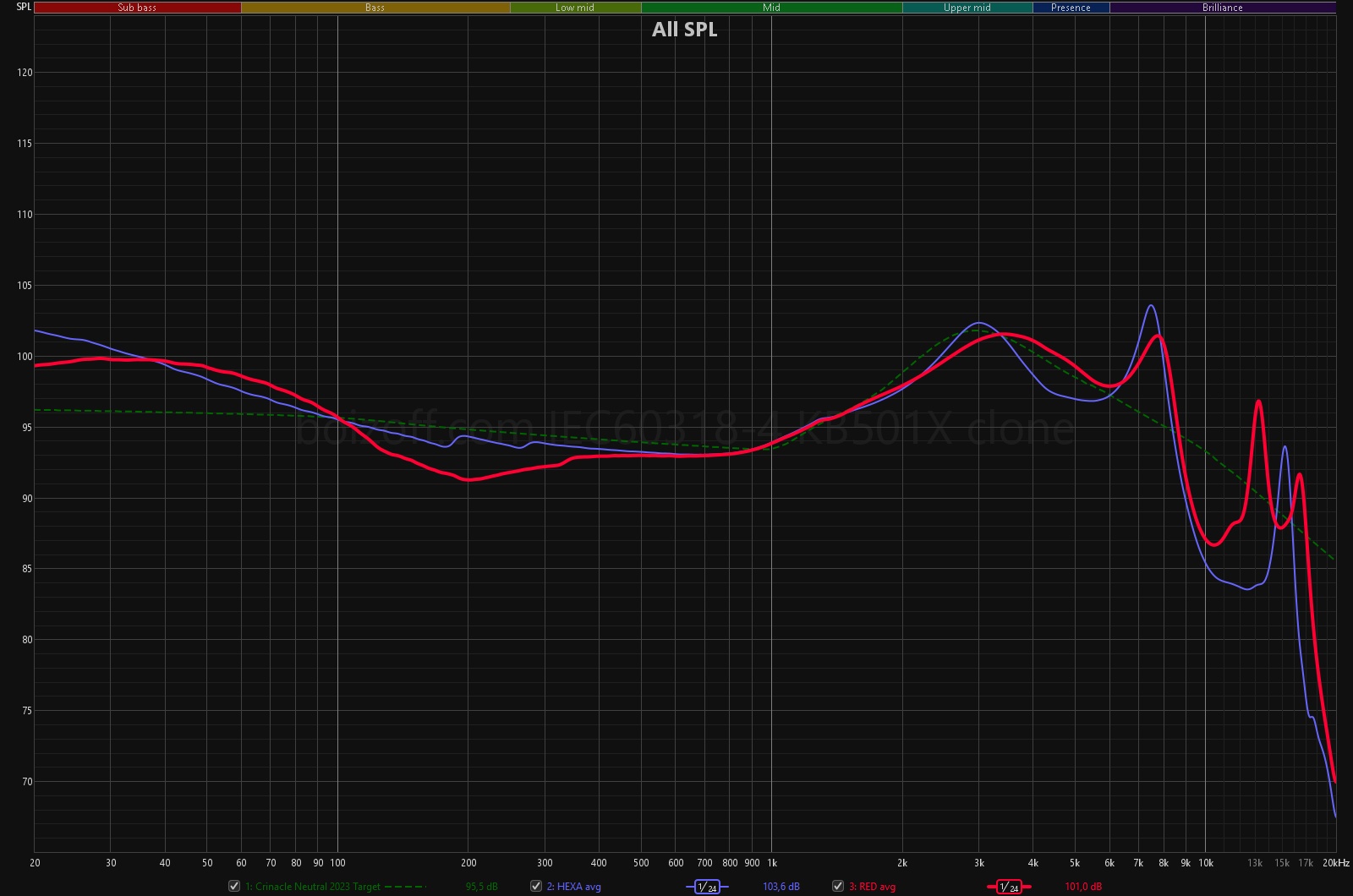
I can only repeat what I already wrote in the RED review.
Subjective difference in sounding
- RED are much bassier as compared to HEXA.
- HEXA have a more pronounced middle range and less accentuated upper frequencies.
However, the upper frequency range of HEXA is less even, so the peak of nearly 7.5 kHz is perceived more clearly with HEXA.
Compared to each other, RED’s sound can be called ‘V-shaped’, with their sound delivery more versatile, whereas HEXA are more ‘reserved’ and ‘neutral’.
Truthear HEXA vs. Moondrop May
The Truthear HEXA and Moondrop May frequency response graphs compared
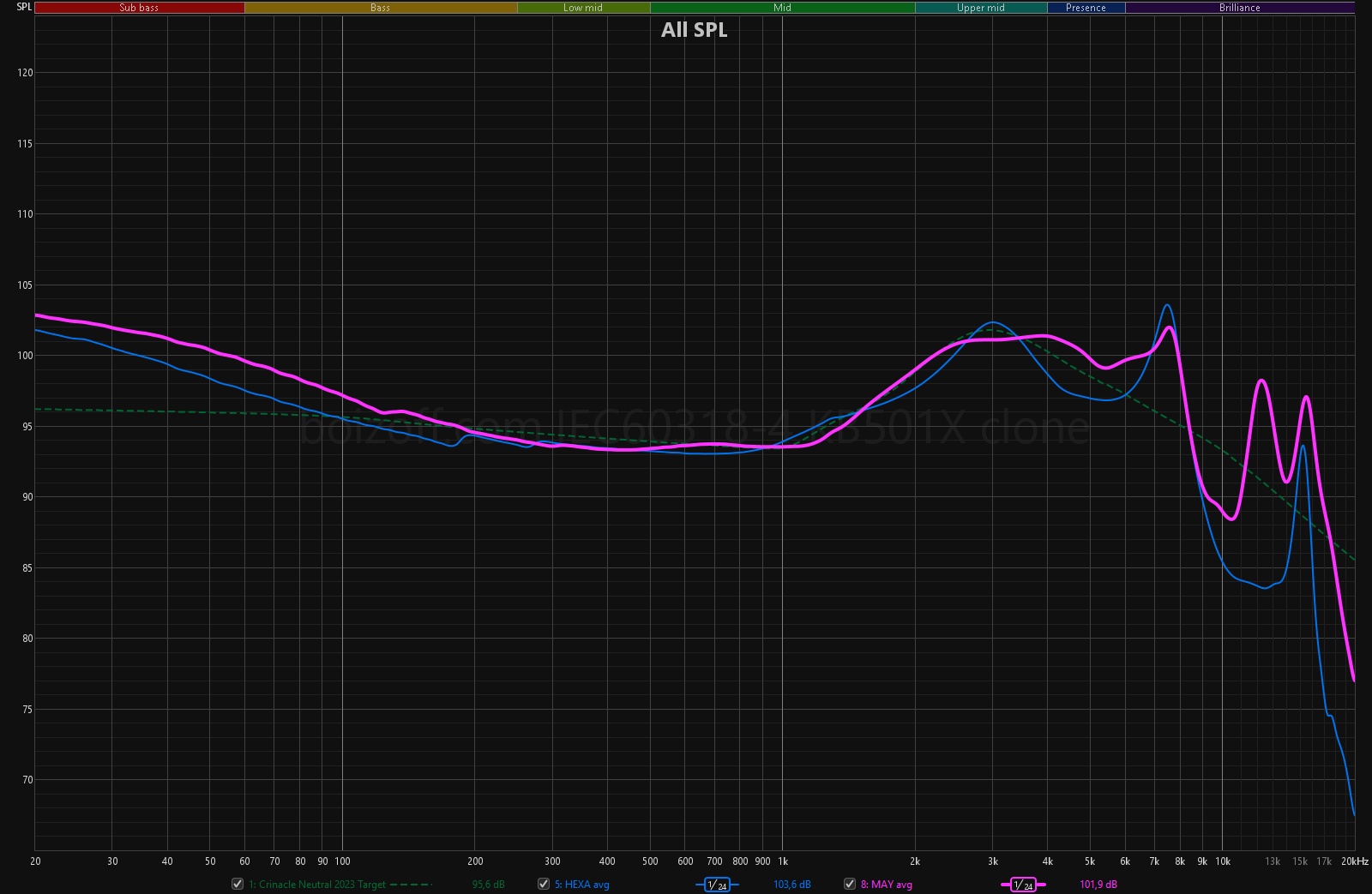
Subjective difference in sounding
- May sound fuller, airier, and more natural than HEXA.
- In some tracks, an unpleasant synthetic side tone appears in the May sound.
Compared to each other, the May sound can be described as a ‘fine-tuned HEXA sound’. HEXA are less demanding of records and less aggressive, more neutral.
Truthear HEXA vs. TRUTHEAR x Crinacle ZERO
The Truthear HEXA and Truthear x Crinacle ZERO frequency response graphs compared:
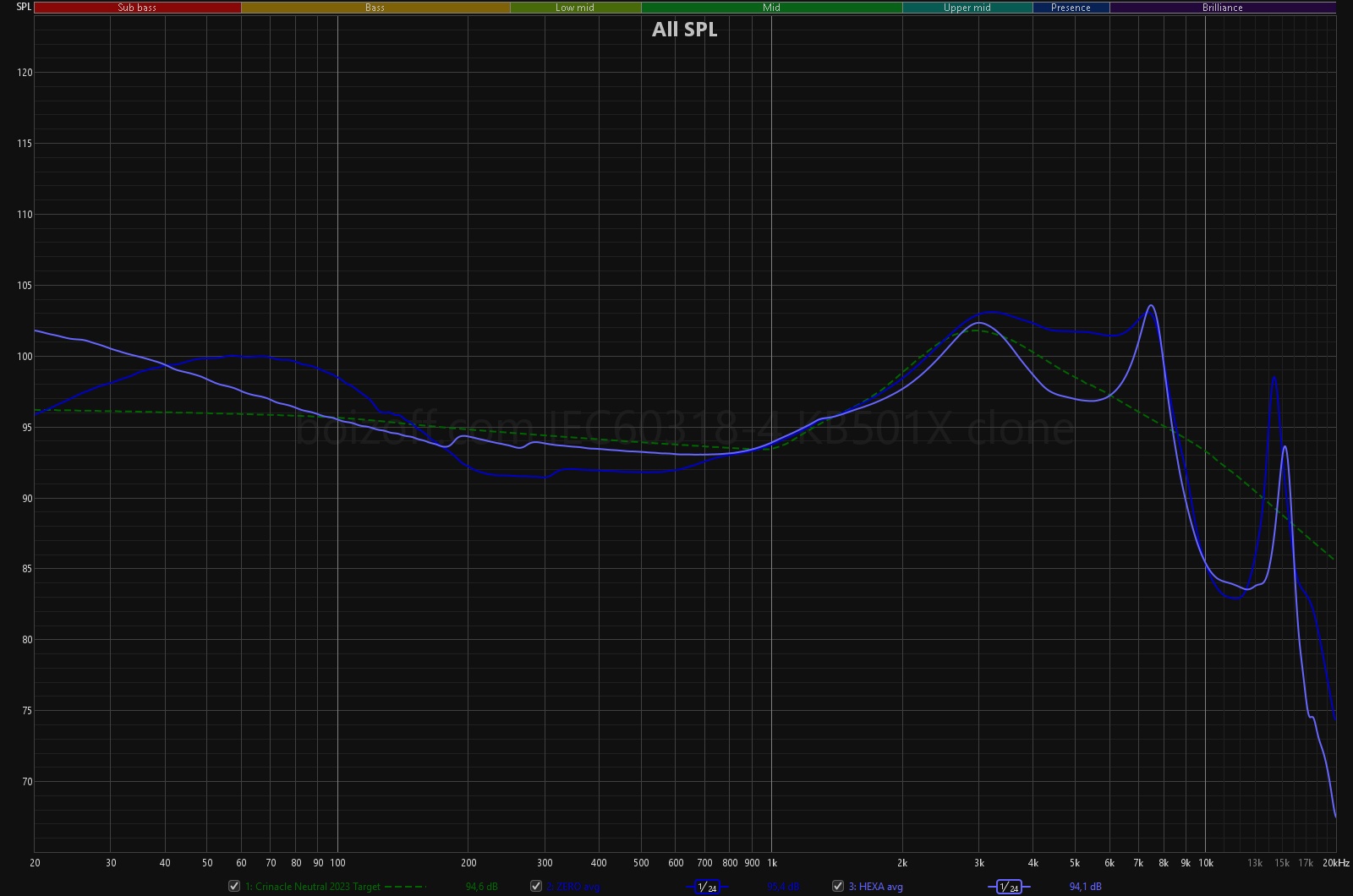
Subjective difference in sounding
- The ZERO sound is dominated by exaggerated bass, whereas the HEXA sound is dominated by medium frequencies.
- HEXA sound sharper.
Compared to each other, the ZERO sound can be called ‘V-shaped’ and ‘dulled’, whereas HEXA sound transparently, naturally, but less assertively.
Summary
Truthear managed to produce very interesting earphones. They are amusing and pleasant to listen with. It’s quite clear to me why HEXA has a lot of fans, although I can’t call myself an apologist for such tuning.
I can safely recommend HEXA to fans of close to neutral tuning, to those who like neither dominant basses nor articulated treble, to those who like when “it may be not so cheerful, but very, very neat.” And, again, HEXA earphones are for silence, for home or work because on a noisy street, let alone the subway, all the charm of their sound delivery vanishes in an instant.
To buy or not to buy: to buy, but only after thoughtful listening and clear understanding that you need exactly this kind of sound.

